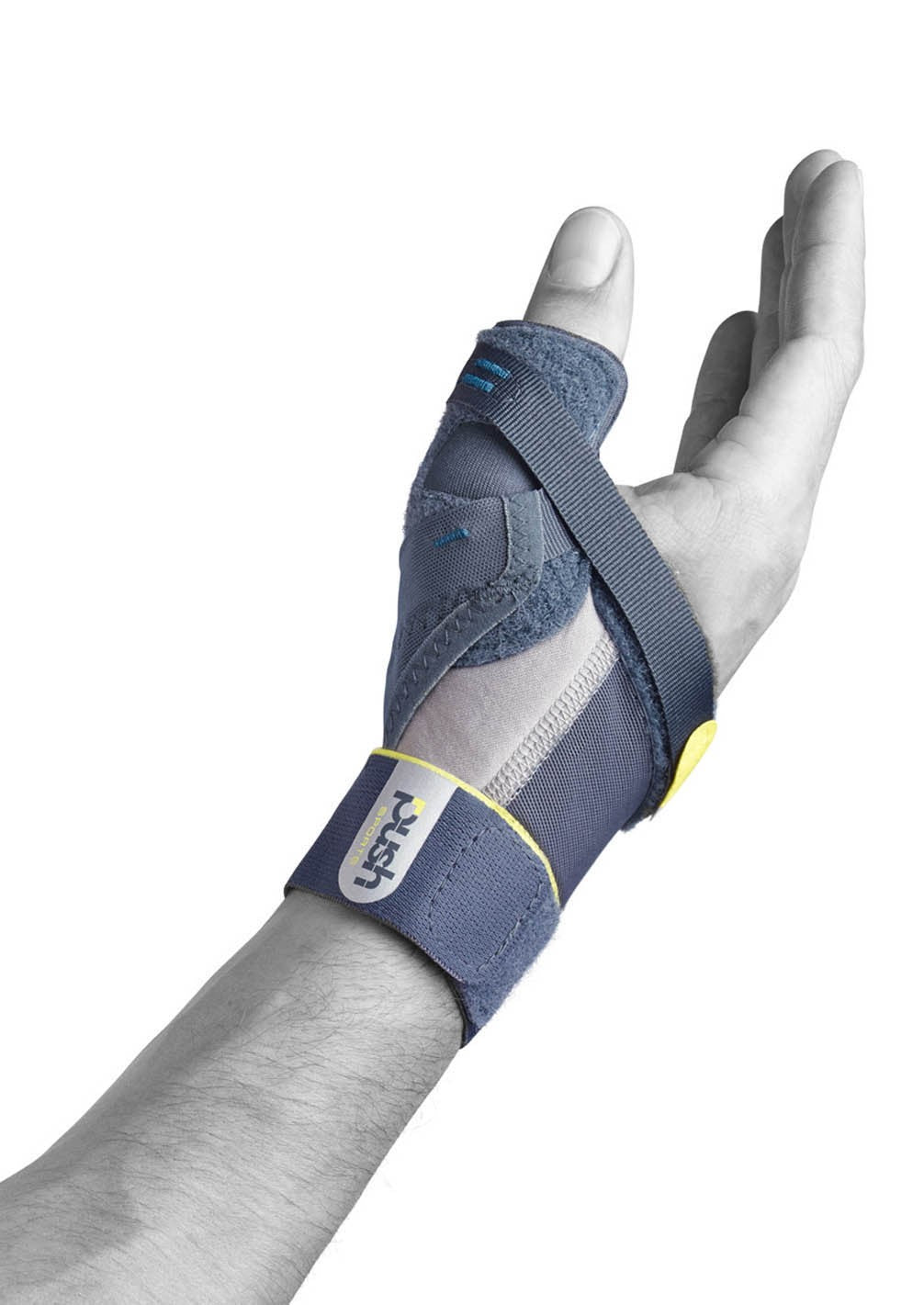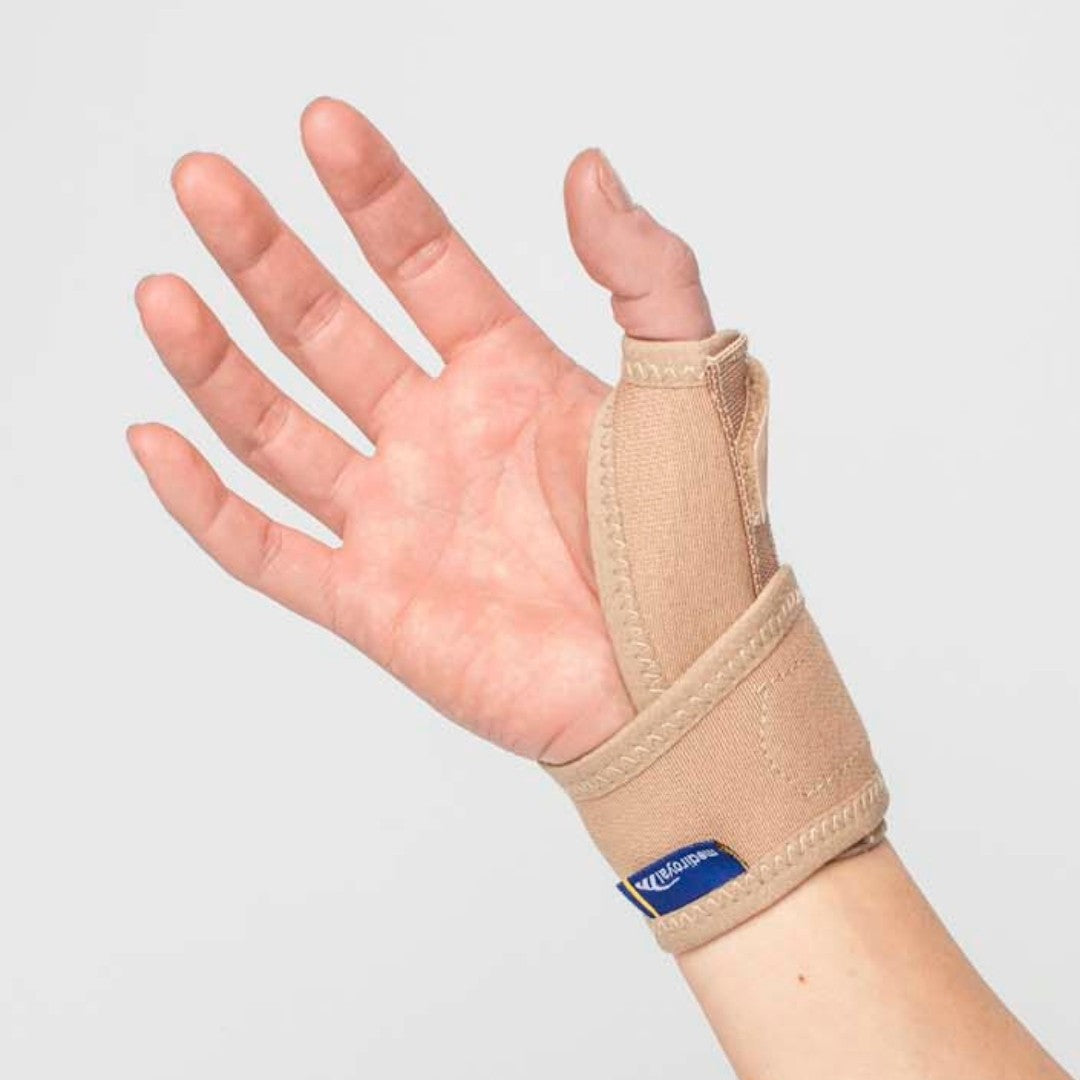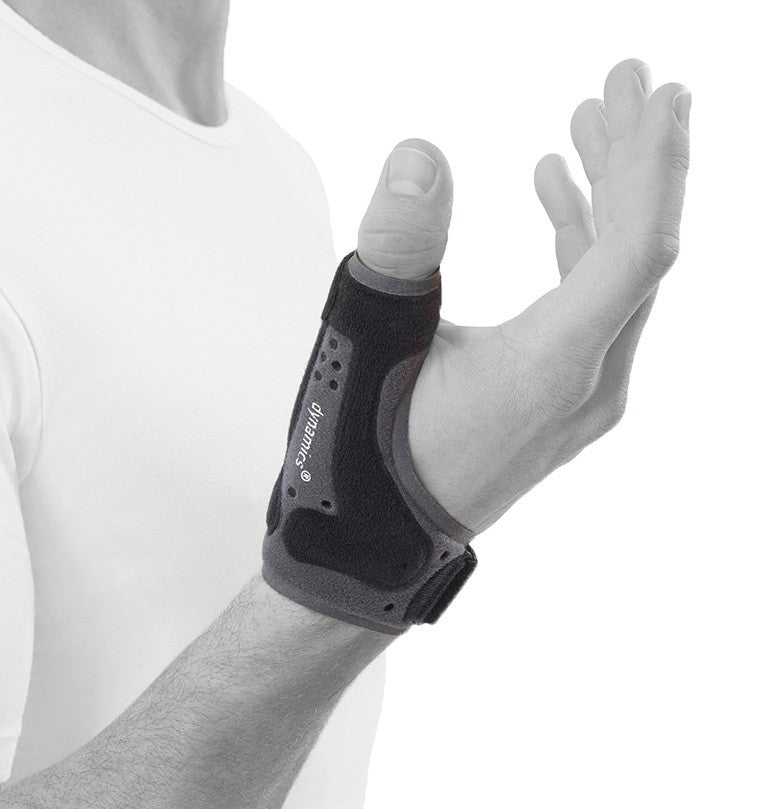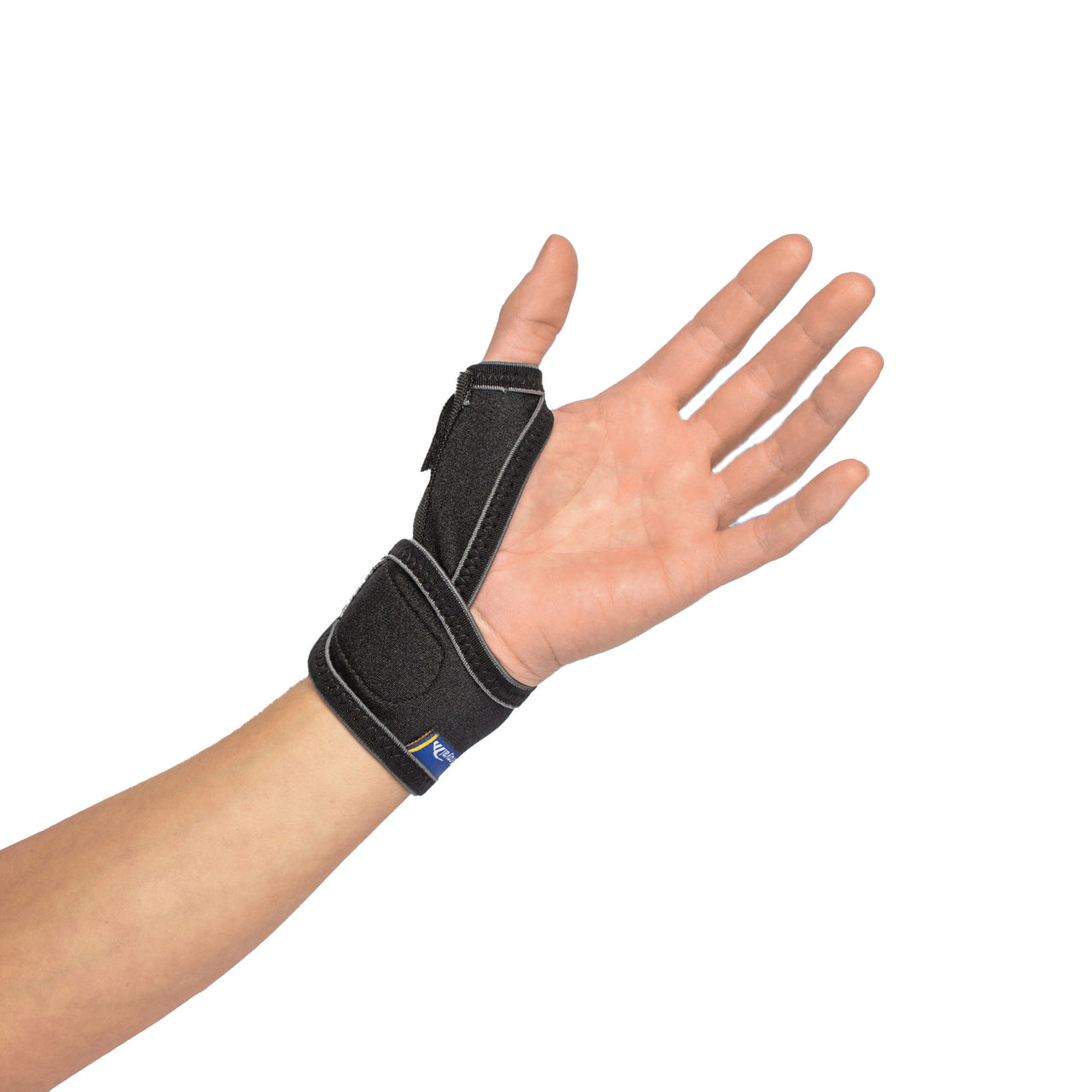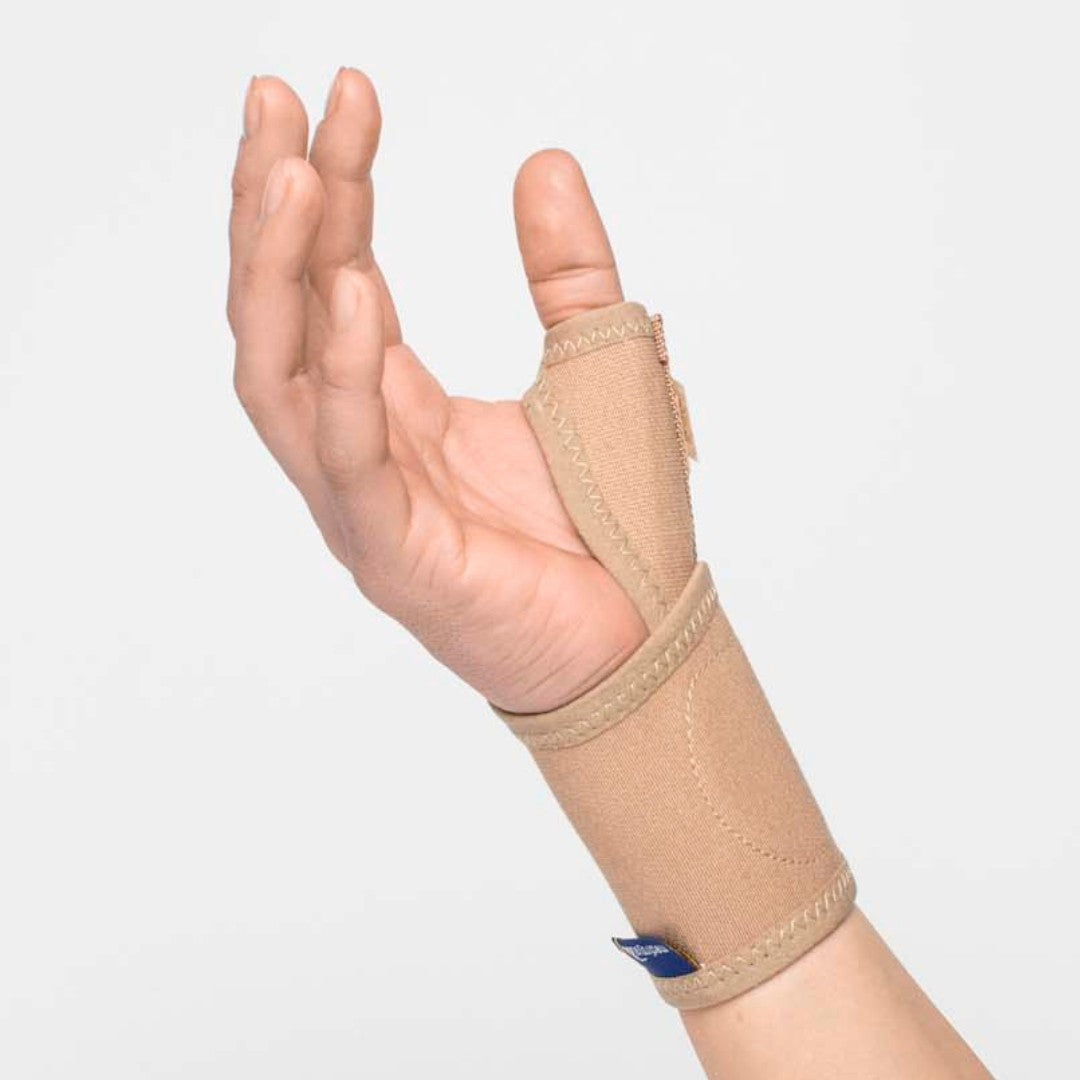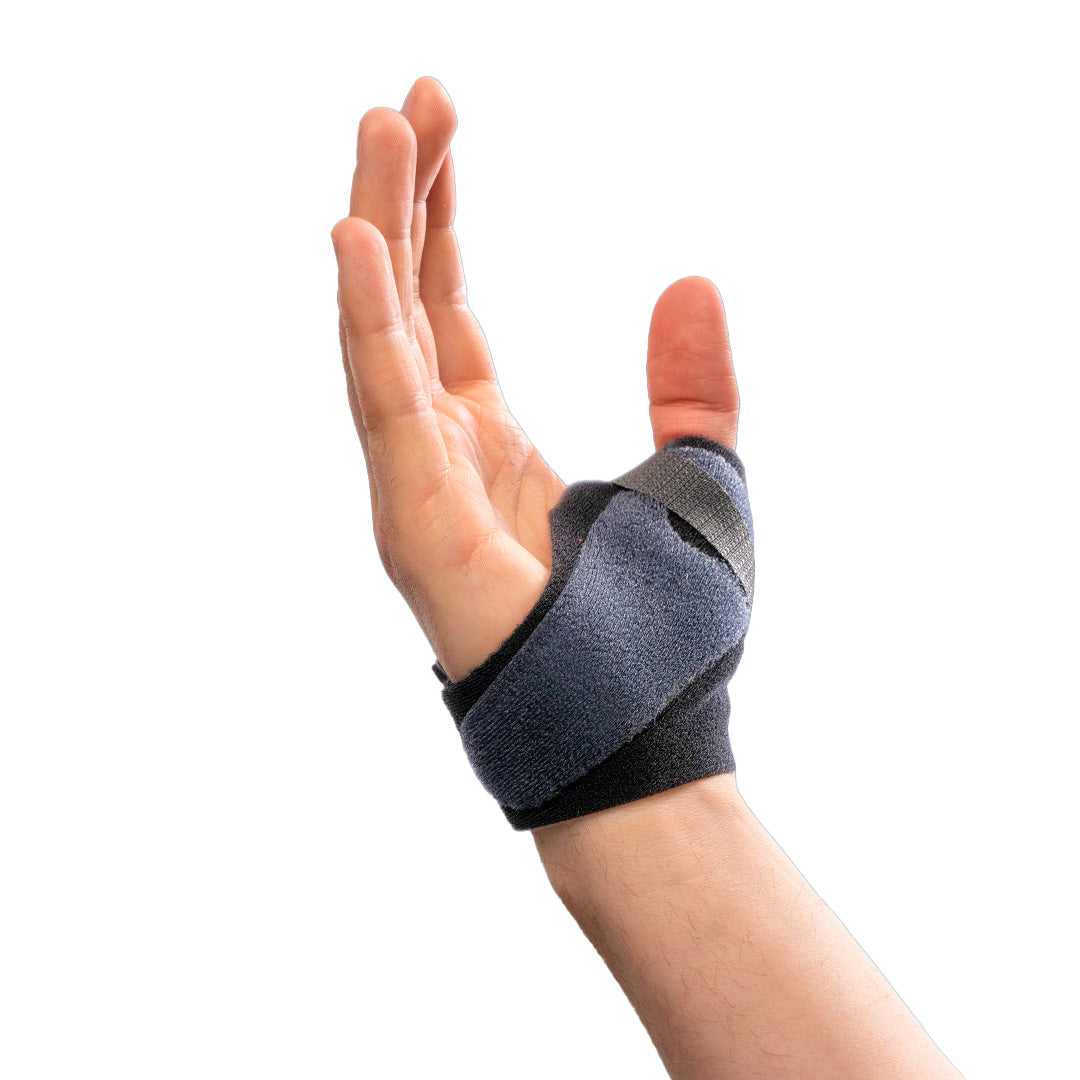Thumb pain – causes, symptoms and thumb supports
The thumb plays a central role in the hand's grip function and is therefore often exposed to strain. Pain in the thumb can be due to several causes – from overload and inflammation to thumb osteoarthritis or ligament injuries.
What is thumb pain?
The thumb is crucial for hand strength and grip. Common problems arise from osteoarthritis of the thumb base, inflammation of the gliding tendons (De Quervain's) or ligament injuries after trauma. The problems can lead to pain, swelling and reduced function in both the thumb and wrist.
Common causes & risk factors
Thumb problems can arise for a number of reasons. Osteoarthritis of the thumb base is a wear and tear of the articular cartilage in the thumb base joint that often causes pain during movement and strain. De Quervain's syndrome involves inflammation of the gliding tendons in the thumb base and often leads to pain on the thumb side of the wrist. Ligament injuries in the thumb usually occur from sprains or direct trauma, and often manifest as bruising and swelling. Repeated overload or one-sided movements can also increase the risk of problems.
Symptoms
- Pain in the base of the thumb or the base joint of the thumb
- Swelling and stiffness
- Pain with movement and strain, sometimes even at rest
- Reduced grip strength and instability in the thumb
When should you seek medical attention?
Seek medical attention if you experience persistent pain, suspect ligament damage, or if the problem affects your hand's everyday function.
Recommended protection & support
There are several aids to relieve and prevent discomfort. Thumb supports and thumb splints can relieve and stabilise the thumb base in cases of osteoarthritis, while wrist supports with integrated thumb supports are a good alternative for inflammation or De Quervain's syndrome. In the case of ligament injuries or sprains, more stable thumb supports are recommended that provide extra protection. In addition, ergonomic aids can make everyday life easier and reduce strain both at work and in leisure time. See all our products for the hand, wrist and thumb here.
About our Injury Guide – quick guidance in case of complaints
In our Injury Guide, you will receive clear and easy-to-understand information about common injuries, how they occur and what symptoms usually occur. You will also receive recommendations on which protection and aids can relieve your discomfort and help you further in your rehabilitation. All information is based on expert knowledge from our licensed physiotherapist.
For more information about the hand and wrist, you can read more in the Injury Guide Hand & Wrist. You can also go to the Injury Guide's main page to read about other injuries and symptoms.
Related injuries:
- Wrist pain
- Carpal tunnel syndrome
- Inflammation of the wrist
- Thumb osteoarthritis (arthritis of the thumb)
Find the right protection for your needs
There are several ways to find the right product on our website. For a more personalised selection, you can use our filters and sort by injury, body part or sport. You can also get help from our AI assistant Eir, who is trained on all the content on our website and can help you with product recommendations, fit questions and order-related concerns – 24/7. If you would rather speak directly to our licensed physiotherapist, Ida, you can reach her via email or phone for personal advice and support in your product selection.


